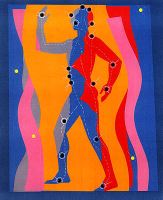 A couple of years ago Prof. Ernst evaluated the risk of bias in studies of acupuncture that use the A + B versus B study design.
A couple of years ago Prof. Ernst evaluated the risk of bias in studies of acupuncture that use the A + B versus B study design.
First, some background.
A commonly used approach in the design of medical treatment studies is to randomly assign patients to usual care (A) plus the experimental treatment (B) or to usual care (A) alone — A + B vs A.
At first glance, says Prof. Ernst, such comparisons may seem reasonable. However, on closer inspection, it’s doubtful that such studies are a fair scientific test of an experimental treatment such as acupuncture.
Why?
The A + B vs B study design stacks the deck against the possibility of a negative result, says Prof. Ernst. Even in the absence of any specific effect by the active treatment “B,” the results could be positive due to the following factors.
- Nonspecific placebo effects
- Additional care given to patients as a results of carrying out the study
- The therapist-patient relationship or social desirability
A further contributor could be the disappointment experienced by patients of the control group alone “A” when not receiving the experimental treatment “B” they might have hoped for.
The bottom line?
Yes, the A + B vs B study design is popular today.
But when it comes to acupuncture, Prof. Ernst’s review of 13 studies revealed that the A + B vs B design for pain control studies is likely to produce false positive results (conclusion that the treatment has a positive effect when, in reality, it does not).
He concludes that such studies may therefore not be adequate scientific tests of the effectiveness of acupuncture or other therapeutic interventions for that matter.
The topic is important because, as this blog has documented, many studies of acupuncture have being conducted. Yet, poorly designed studies do nothing to advance the value of acupuncture. As a practical matter, they just provide ammunition for skeptics.
8/4/08 21:25 JR